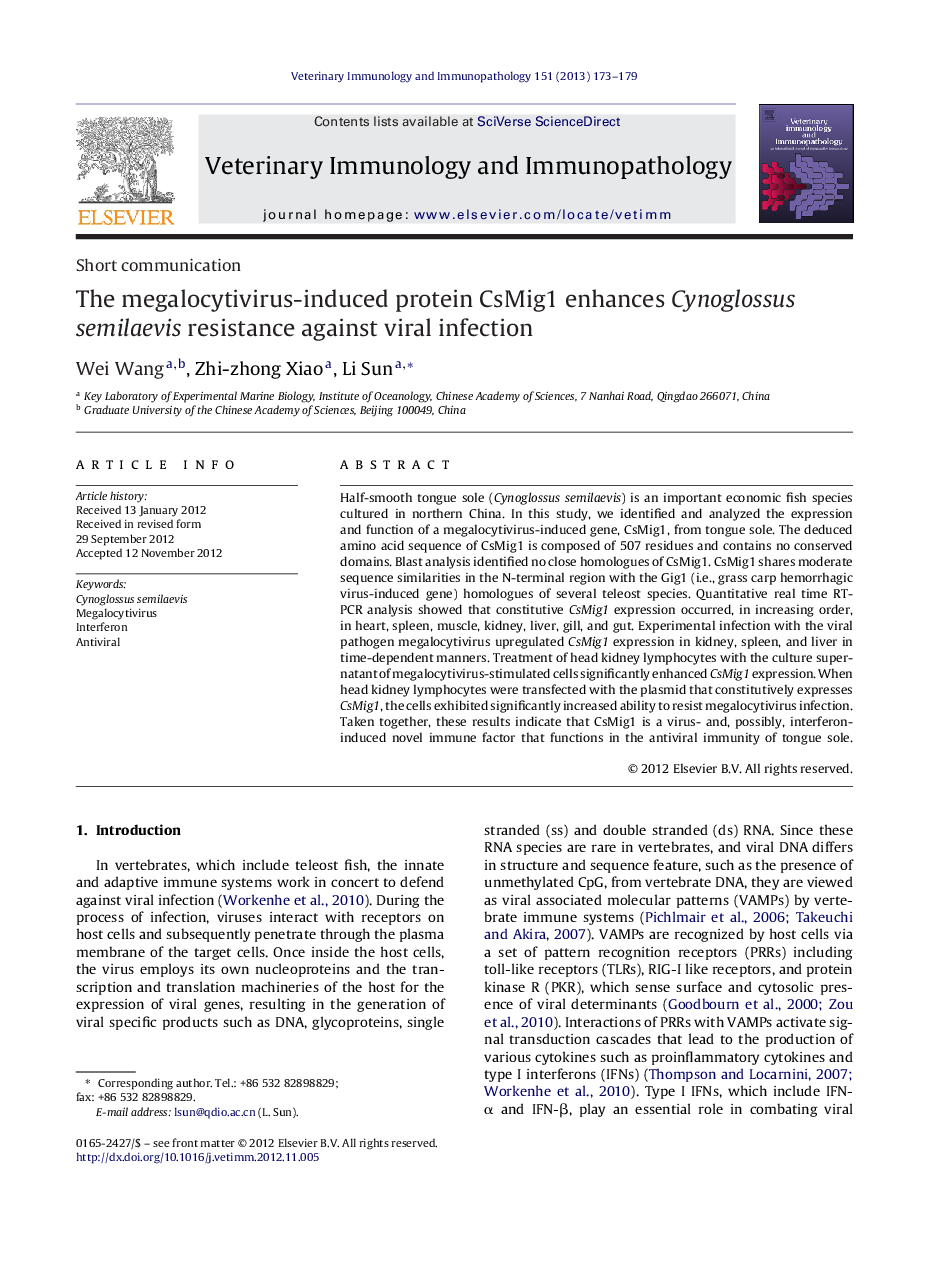| Article ID | Journal | Published Year | Pages | File Type |
|---|---|---|---|---|
| 2461640 | Veterinary Immunology and Immunopathology | 2013 | 7 Pages |
Half-smooth tongue sole (Cynoglossus semilaevis) is an important economic fish species cultured in northern China. In this study, we identified and analyzed the expression and function of a megalocytivirus-induced gene, CsMig1, from tongue sole. The deduced amino acid sequence of CsMig1 is composed of 507 residues and contains no conserved domains. Blast analysis identified no close homologues of CsMig1. CsMig1 shares moderate sequence similarities in the N-terminal region with the Gig1 (i.e., grass carp hemorrhagic virus-induced gene) homologues of several teleost species. Quantitative real time RT-PCR analysis showed that constitutive CsMig1 expression occurred, in increasing order, in heart, spleen, muscle, kidney, liver, gill, and gut. Experimental infection with the viral pathogen megalocytivirus upregulated CsMig1 expression in kidney, spleen, and liver in time-dependent manners. Treatment of head kidney lymphocytes with the culture supernatant of megalocytivirus-stimulated cells significantly enhanced CsMig1 expression. When head kidney lymphocytes were transfected with the plasmid that constitutively expresses CsMig1, the cells exhibited significantly increased ability to resist megalocytivirus infection. Taken together, these results indicate that CsMig1 is a virus- and, possibly, interferon-induced novel immune factor that functions in the antiviral immunity of tongue sole.
